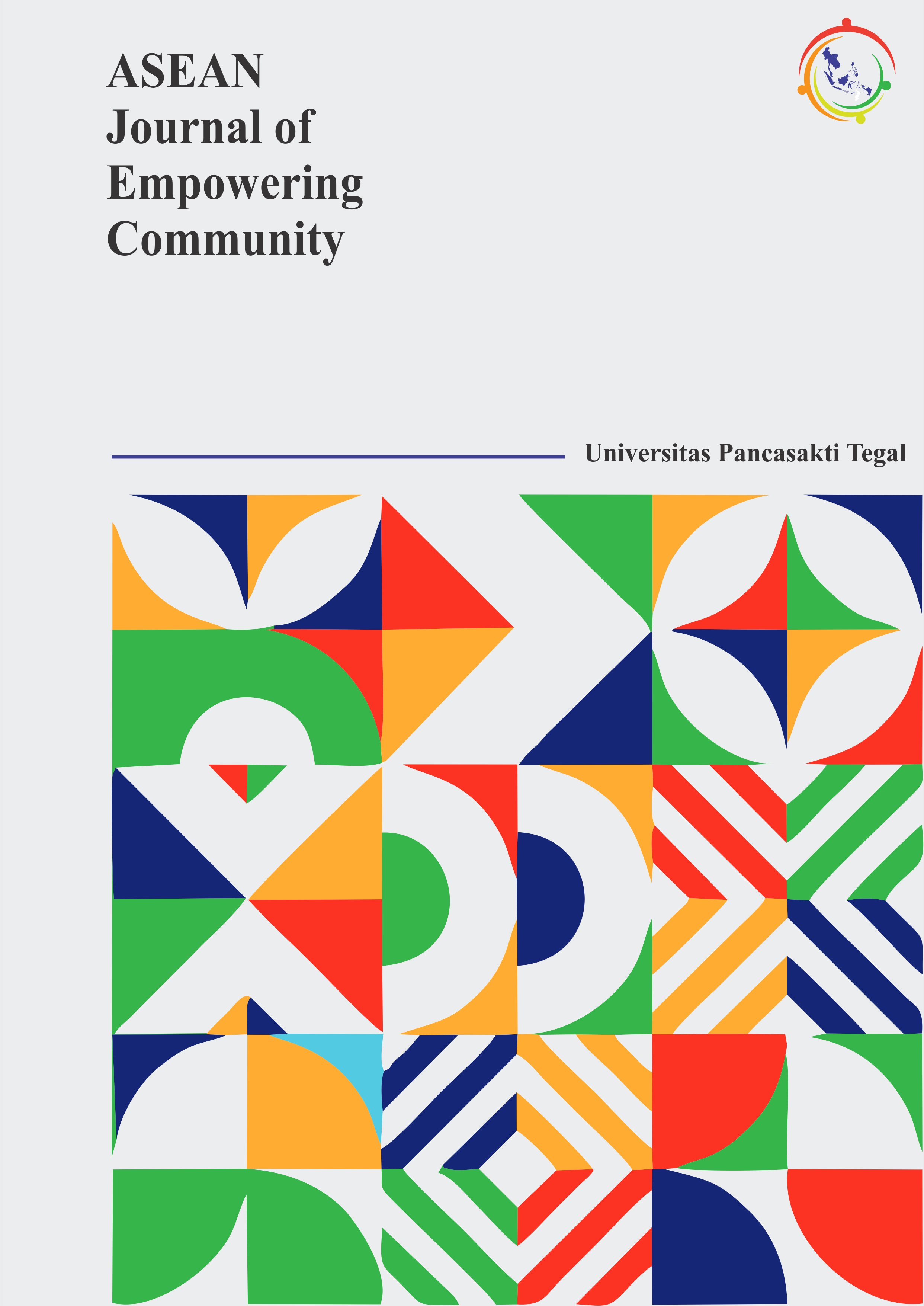Date Log

This work is licensed under a Creative Commons Attribution-NonCommercial 4.0 International License.
Maggot Cultivation Assistance in Loireng Village, Demak With Practitioners from the Panata Bumi Waste Bank
Corresponding Author(s) : Bayu Widiyanto
ASEAN Journal of Empowering Community,
Vol. 4 No. 1 (2024): ASEAN Journal of Empowering Community
Abstract
Loireng Village, Sayung District, Demak Regency, is one of the villages classified as very old. Currently, Loireng Village has become one of the industrial villages in Demak Regency, as many factories have been established in this village area. The location of Loireng Village, which is divided by the Semarang – Demak Highway, even the midpoint of the Semarang – Demak Highway (Km 13) is in the Loireng Village area, is indeed very ideal for becoming an industrial area. That situation is one of the reasons why waste management needs to be prioritized, because the amount of waste generated is not proportional to what is being managed. Currently, the village of Loireng Tengah is struggling to create a clean environment in addressing the waste problem. A good waste management system that adheres to existing standards will also have good development potential and can advance the environment where the waste management is established. So far, the old waste management pattern still follows the paradigm of collecting, transporting, and dumping at the landfill, which causes the landfill to become full. Unmanaged organic waste can endanger the environment and community life. Therefore, these wastes must be controlled in terms of their handling. One form of control that can be applied is the use of Integrated Waste Management Sites (TPST). An integrated waste management site is an area where the collection, sorting, reuse, recycling, and final processing of waste are carried out. For community coverage, TPST is unified into TPS reduce-reuse-recycle (3R). According to information on the technical implementation of TPS3R, the program aims to support activities in reducing and improving waste conditions, which will subsequently be followed by continuous work at the Final Disposal Site (TPA) that contributes to reducing the land requirement for waste disposal sites in urban areas. Through maggot farming, the utilization of organic waste will be more easily controlled. The control referred to is through maggot cultivation, specifically organic waste.
Keywords
Download Citation
Endnote/Zotero/Mendeley (RIS)BibTeX
- Mungkasa, 2004. Infrastruktur Indonesia.
- Bappenas, 1995. Perhitungan Timbulan Sampah di Indonesia.
- BPS, 2001. Data Timbulan Sampah.
- Dewi, R. & Sylvia, N., 2021. Pengelolaan Sampah Organik melalui Budidaya Maggot.
- Salman, dkk., 2020. Prosedur Kerja Budidaya Maggot.
- Fauzi & Sari, 2018. Pemanfaatan Maggot sebagai Pakan Ternak.
- Amelia, 2014. Kandungan Nutrisi Maggot.
- Raharjo et al., 2016. Black Soldier Fly dan Manfaatnya.
- Rianti, 2022. Keunggulan Lalat BSF dalam Mengelola Sampah.
- Sejati, 2009. Dampak Sampah terhadap Lingkungan.
- Alizahatie, 2019. Program Pengelolaan Sampah di Masyarakat.
- Lismayeni, dkk., 2020. Usaha Rumahan sebagai Peluang Usaha Baru.
References
Mungkasa, 2004. Infrastruktur Indonesia.
Bappenas, 1995. Perhitungan Timbulan Sampah di Indonesia.
BPS, 2001. Data Timbulan Sampah.
Dewi, R. & Sylvia, N., 2021. Pengelolaan Sampah Organik melalui Budidaya Maggot.
Salman, dkk., 2020. Prosedur Kerja Budidaya Maggot.
Fauzi & Sari, 2018. Pemanfaatan Maggot sebagai Pakan Ternak.
Amelia, 2014. Kandungan Nutrisi Maggot.
Raharjo et al., 2016. Black Soldier Fly dan Manfaatnya.
Rianti, 2022. Keunggulan Lalat BSF dalam Mengelola Sampah.
Sejati, 2009. Dampak Sampah terhadap Lingkungan.
Alizahatie, 2019. Program Pengelolaan Sampah di Masyarakat.
Lismayeni, dkk., 2020. Usaha Rumahan sebagai Peluang Usaha Baru.
